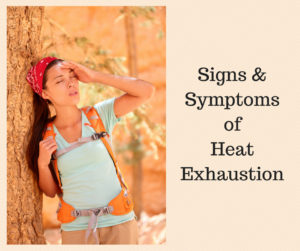
As a companion to this month’s article on safe summer exercise, here is a bit more information about common health issues that can occur in places like Central Texas, where daytime temperatures are high for long periods of time during each day and throughout the season. The increased humidity that our area experiences during the summer months contributes to the risk of heat related illness. Do you know how to recognize signs of heat exhaustion? How about when to call for help? These excerpts from this WebMD article are useful to keep at the top of your mind as we head into the long Austin summer.
Heat exhaustion is a heat-related illness that involves depleted levels of water and/or salt within the body. Left untreated, heat exhaustion can lead to heat stroke, which is a greater health emergency. Signs of heat exhaustion may include the following:
- Extreme thirst
- Confusion
- Dark-colored urine (a sign of dehydration)
- Dizziness
- Fainting
- Fatigue
- Headache
- Muscle or abdominal cramps
- Nausea, vomiting, or diarrhea
- Pale skin
- Profuse sweating
- Rapid heartbeat
If you or someone that you are with is exhibiting these signs and symptoms, the most important first step is to get out of the heat and into a cool place – whether that be the nearest shade or an air conditioned building or vehicle. You should also do the following:
- Drink plenty of fluid (but not those containing caffeine and alcohol).
- Remove any tight or unnecessary clothing.
- Take a cool shower, bath, or sponge bath.
- Apply other cooling measures such as fans or ice towels.
WebMD’s recommendation is that if these things do not resolve the symptoms within a short period of time – 15 minutes or so – then emergency medical help should be summoned. After immediate symptoms have been managed, it is also wise to consult with a physician to discuss an appropriate individualized plan for gradual return to normal activity.
We hope these tips are useful. Stay safe & have fun this season!
